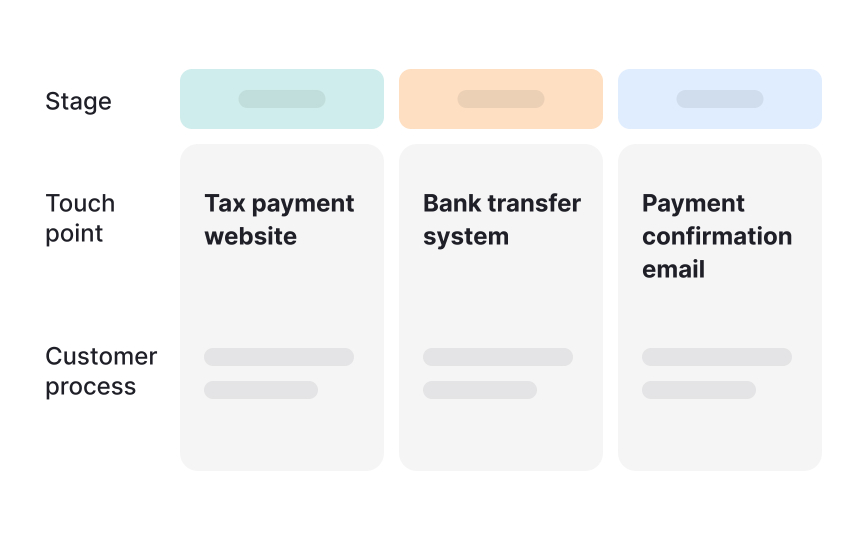Mapping essential touchpoints
Journey mapping begins by identifying where citizens interact with government services. Start by collecting data from internal documents, website analytics, call center logs, and front desk reports. These sources help uncover the most common entry points and interaction patterns.
Next, document each touchpoint with specific details: physical locations with addresses and office hours, digital platforms with URLs and features, and contact center numbers with operating hours. Include any service-specific requirements, such as required documents or payment steps at each point.
Collaborate with front-line staff to confirm this information. Their day-to-day experience offers valuable insights into which channels citizens actually use and prefer. Be sure to note any differences between official procedures and real-world behavior, as these gaps often highlight areas where services can improve.
To keep your mapping consistent, use a standard format for recording each touchpoint. Include the channel type, access method or location, available services, and hours of operation. This structured approach makes it easier to compare and align data across different departments.
Pro Tip: Create a simple spreadsheet template for touchpoint documentation to maintain consistency when multiple team members collect information.

